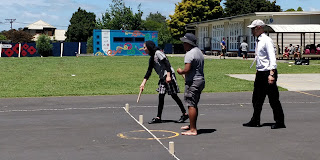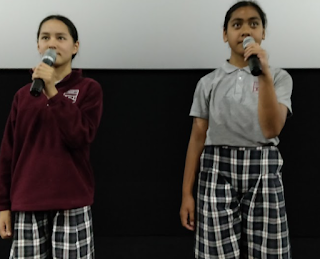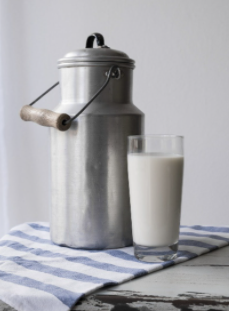I am a Year 7 student at Panmure Bridge School in Auckland, NZ. I am in Learning Space 2 and my teachers are Mrs Anderson and Mrs Fisi'iahi.
Friday, 27 November 2020
Kubb | Warrior Game
Kiwi Sport | Touch Rugby
LI: to practice using three and two man settles.
Inquiry | Model Materials
Thursday, 26 November 2020
Maths | Basic Facts Boxes
Inquiry | Material Properties
The materials that are appropriate for a storm are: PVC plastic, chicken wire, plaster, concrete and wool.
PVC plastic is a suitable material for shelters because it is flexible and strong. This material has been chosen to protect against storms because it is firm enough to withstand aggressive wind currents.
Chicken wire and plaster is used to hold the walls and structure together. This material has been chosen to protect against storms because it can give the structure more protection and strength against strong winds.
Concrete is a suitable material and strong material for the foundation of a structure. This material has been chosen to protect against storms because it provides a strong foundation for an emergency shelter against storms.
Wool is used for many things, however in this case it is used to absorb water and rain. This material has been chosen to protect against storms because it prevents people inside of the shelter from getting wet and causing them to freeze.
It is important to have a good understanding of the properties of materials because this knowledge can be helpful when designing a strong, quality structure.
LI: to prepare materials for construction.
Reading | SSR Selfie
SSR Selfie is a can-do activity that encourages readers to retell a story that they have read, and using detail in their summaries so that the audience can understand and find interest in that certain book.
This week, I have done my SSR Selfie activity on a book called '101 Cool Science Experiments' by Helen Chapman. This is a non-fiction book that informs the reader about the many science experiments that you could conduct.
Reading | Fact Find | Flerovium
The Fact Find activity finds information and facts about a famous person, important historical person, visual art, performance art, literary art, sport, athlete, machine, animal, plant, enviroment, place around the world, space or chemical.
Wednesday, 25 November 2020
Maori | Conversations & Names
Tuesday, 24 November 2020
Reading | Analysing and Evaluating Text Understandings
A novel study analyses information from a story to develop a persons literature skill and understanding of the text. This novel study is based around the story, 'Matilda'. Matilda is about a little girl who loves to read, and is incredibly smart. However her own family treats her unequally.
Maths | Fractions, Decimals and Percentages
Monday, 23 November 2020
Kapa Haka Performance
Today in Assembly, we watched a traditional Maori performance by a small kapa haka group.
First, the kapa haka group performed an entrance ceremony by blowing a horn and introducing themselves in Maori. They presented their kapa haka dance and talked about their traditional Maori weapons which were poi, taiaha and ti rakau.
The poi and ti rakau are training tools that help develop dexterity for other weapons. The taiaha is a proper weapon.
Next, we sang He Honore to thank them for their dance, and our boys kapa haka group responded with a haka performance. The boys kapa haka group did the pukana in their dance as well.
After that, the classes split up to play some cultural games. The game we were taught was called Matau and Maui. Each person holds a stick, and when someone calls out Maui, we have to grab the stick to our left. When someone calls out Matau, we grab the stick to our right.
This game taught us coordination skills and cooperation. This game is good for teaching soldiers how to coordinate and work together.
I really enjoyed watching the Maori performances that were presented in Assembly, and I especially liked playing Matau and Maui. This was a good opportunity to learn about the Maori culture.
LI: to experience and learn kapa haka.
Friday, 20 November 2020
Commenting Thread
A comment thread is an expanded conversation between two people that consists of a greeting, positive feedback and an open question. The different between an open question and a closed question is that an open question requires more thinking to give an answer and it expands the conversation. A closed question only needs a few words for an answer, and it does not expand the conversation.
Kiwi Sport | Touch Rugby
LI: to practice using three and two man settles.
SSR Selfie
SSR Selfie is a can-do activity that encourages readers to retell a story that they have read, and using detail in their summaries so that the audience can understand and find interest in that certain book.
This week, I have done my SSR Selfie activity on a book called 'The Taming of the Shrew' by Shakespeare rewritten by Anthony Matthews. This is a non-fiction book about Petruchio's plan to trick and confuse Katherina in order for her hand in marriage and change her temper.
Thursday, 19 November 2020
Inquiry | Model Materials
Our focus for inquiry was to determine the materials and the amount of the materials we would use to build a model for an emergency structure.
First, we brainstormed a list of materials to use for our shelter model. We thought about what materials we would use for different parts of the structural design such as walls, protection layers, windows and doors.
We knew that the maximum height of the shelter models would be 20 centimeters, so we applied that knowledge to measure the correct amount of materials and which materials would be best to survive a natural disaster.
Next, we measured the other dimensions of our structure to find out the other amount of the materials we would use. Our structure's dimensions were 20cm in height, 66cm in length all the way around and 2cm in depth or width.
We found out the area and volume of the shelter by multiplying the height by the width. To find out the centimetres cubed as the measurement for the concrete, we needed to multiply the area by 2, then convert that to cubic meters.
I really enjoyed measuring the different dimensions of our shelter to calculate the amount of materials. Our company also found that figuring out the amount of materials needed was difficult but enjoyable.
LI: to prepare materials order for construction.
Reading | Explain that Idiom
Explain that Idiom is a reading can-do that expands a persons knowledge on idioms, idiom meanings and how they are used. Idioms are figurative phrases that don't mean what they say.
This week, I completed researched three different idioms, found the meaning of them and made a script to film a video that shows the usage of each idiom.
Maori | Volcanoes
LI: to identify the different weather changes in Maori.
Writing | Storyboarding
Storyboards are a series of illustrations that show what a character is doing, the camera angles and the setting in which something is taking place in an individual scene.
Tuesday, 17 November 2020
Writing | Anywords
Maths | Exploring Statistics
Monday, 16 November 2020
Reading | Novel Study
A novel study analyses information from a story to develop a persons literature skill and understanding of the text. This novel study is based around the story, 'Matilda'. Matilda is about a little girl who loves to read, and is incredibly smart. However her own family treats her unequally.
Maths | Basic Facts
Friday, 13 November 2020
Athletics Day
Wednesday, 11 November 2020
Manaiakalani Film Festival
Reading | Fact Find
Tuesday, 10 November 2020
Commenting Thread
Commenting Thread is an expanded conversation between two people that consists of a greeting, positive feedback and an open question. The different between an open question and a closed question is that an open question requires more thinking to give an answer and it expands the conversation. A closed question only needs a few words for an answer, and it does not expand the conversation.
Writing | Screenplay
SSR Selfie
Maths | Basic Facts Boxes
Maths | Sharing Understandings
Reading | Novel Study
A novel study finds out information about a novel or a story, and analyses that information to develop a persons literature skill and understanding of the story.
Friday, 6 November 2020
Kiwi Sport | Touch Rugby
This week in our session of touch rugby with Mark, we learned how to do 2 man and 3 man settles.
We played walking touch to apply our knowledge of 2 and 3 man settles into a game. We did 2 man settles by letting the person with the ball get touched and having the second person pick up the ball and pass the ball back to the person that was touched. Then, we did 3 man settles by having the person with the ball being touched, someone else picks up the ball and passes it to a different person.
LI: to learn how to do 2 people and 3 people settles.
Inquiry | Shelter Design Enquire
This week, our company (Shelters Inc) brainstormed ideas for an emergency shelter design. We needed to think of the structural shape and design of the emergency shelter. We also needed to think about what our shelter will be designed to resist.
My group used a design programme called SketchUp, that allows people to design and create anything they want in three dimensions.
We chose to use a hexagonal-prism for our emergency shelter design. This is because a hexagon is a very strong shape, and it can deflect wind flow.
We decided to make the shelter out of tungsten because it is strong and polyurethane because it is absorbent. We think these are suitable materials for water and wind natural disasters.
Some changes we can make is the size of our shelter. We think that the size could be bigger because the shelter looks small and if it is more spacious, people can put more things in the shelter.
The walls should be very thick, roughly between a meter thick, and made of tungsten. They should be thick so they can withstand aggressive winds and strong water currents. Also because of the wind or water pressure will not break the wall.
The entrance of the shelter is 3.3 meter tall and 2.3 meters wide so that in case of an emergency, everybody can enter.
There should be windows so that the people inside the emergency shelter are aware of what is happening and can identify if it is safe to exit the emergency shelter. The windows should be fairly small, about 1.5 meters so that people can see out of them clearly.
LI: to digitally model an emergency structure.
Writing | Narrative
Thursday, 5 November 2020
Commenting Thread
Commenting Thread is an expanded conversation between two people that consists of a greeting, positive feedback and an open question. The different between an open question and a closed question is that an open question requires more thinking to give an answer and it expands the conversation. A closed question only needs a few words for an answer, and it does not expand the conversation.
Maori | Revision
Duffy Theatre Show - Bex Meets Milly
Wednesday, 4 November 2020
Descriptive Writing
LI: to describe using interesting language features.
Basic Facts Boxes
Basic Facts Boxes is an activity that challenges others to solve maths problems of all operations quickly. There are two challenges within the Basic Facts Boxes: Speed Demon Challenge and Brain Box.
SSR Selfie
SSR Selfie is a can-do activity that encourages readers to retell a story that they have read, and using detail in their summaries so that the audience can understand and find interest in that certain book.
This week, I have done my SSR Selfie activity on a book called 'The Tempest' by Shakespeare rewritten by Anthony Matthews. This is a non-fiction book about Prospero's (a great wizard) desperate desire for justice.








































